1. 1912 was a good year for things that are bad for you.
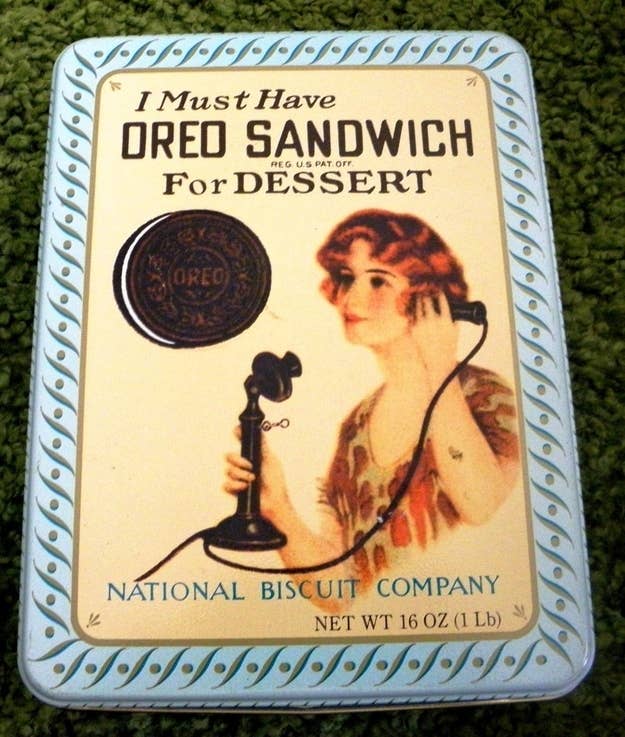
This was the year Richard Hellmann, a German deli owner, started mass marketing his wife’s mayonnaise. It was also the year Life Savers and the Whitman's chocolate sampler were introduced.
Most important new junk food: The “Trio," three different kinds of cookies from the National Biscuit Company, since renamed Nabisco. Two Trio members — the Mother Goose biscuit and the Veronese biscuit — have since gone to cookie heaven. But then there was...the Oreo. They were sold by weight and cost 30 cents (!) a pound.
2. You could finally wander the aisles of the grocery store yourself, searching unsuccessfully for beans.

At least in California. The first self-serve grocery stores opened up on the West coast that year, though they were far from widespread. Before that, if you were rich, you sent your servant with a list and had the shopkeeper deliver the goods to your mansion. If you were poor you went yourself and lugged the groceries back to your tenement.
3. People were pretty confused about cake.

A Devil’s Food Cake recipe from this time included mashed potatoes. Also, there was something called Chop Suey cake, which was really just a glorified fruitcake.
4. Chop Suey was all the rage with the upper crust.
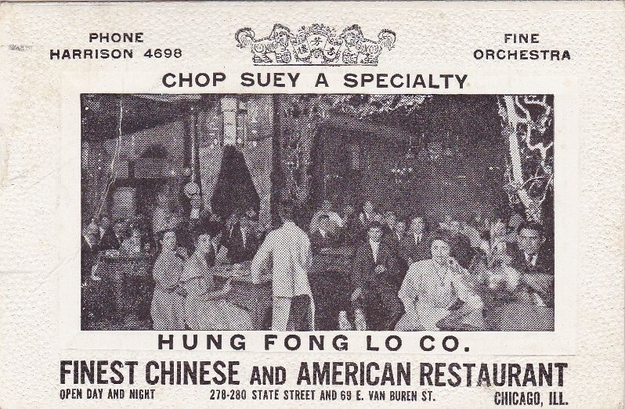
Around this time wealthy white people thought “slumming parties” were really hip. During these terrible-sounding outings, rich people headed to working-class communities that were often Chinese or African-American, and spent a night voyeuristically chilling out.
A “slumming party” to Chinatown often involved eating Chop Suey, a stew made with meats and a few different vegetables (literally it just means "odds and ends"). Soon people started serving versions of Chop Suey at home, and also coming up with recipes for things like Chop Suey cookies and the aforementioned Chop Suey cake.
5. Everyone drank a lot of Coca-Cola.

A 1912 ad for the drink proclaimed, “It’s vigorous, full of life. You’ll enjoy it from the first sip to the last drop and afterwards.” All of which takes on extra meaning when you learn that at that point Coke still had cocaine in it, though less than it used to. The company didn’t mange to fully remove the narcotic from the drink until 1929.
6. The country was in the throes of a breakfast renaissance.

Up until this point it wouldn’t have been unusual to have steak, bacon, eggs, hash browns, AND toast for breakfast. But as industrialization got under way, people no longer had time for that insanity.
Instead, they turned to cereal, originally promoted by John Harvey Kellogg as a health food. Parents discovered it was an easy breakfast to serve their kids as well, and since children preferred the sweeter cereals, companies started adding sugar to their products. From there, it was just a few quick technological steps to a box of Fruit Loops.
7. The art of the dinner party was a thing.
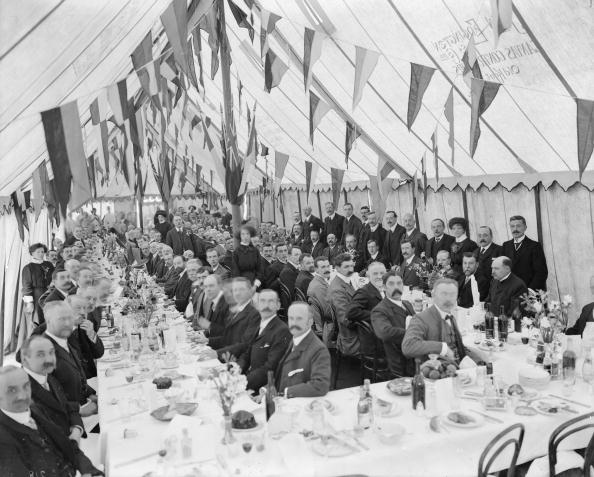
This multi-course event started with cocktails and ended with a choice of a hot or cold dessert. A common first course would have been half a grapefruit. Then you’d get a choice of two soups. Then some hot hors d’oeuvres. Then some cold hors d’oeuvres. Then some anchovies. And by this point you hadn’t even gotten to the entrees yet.
Basically all of the dishes were French, because people thought French food was really chic. Also, between the roast and the game course (yes, two separate courses) you’d have an alcoholic slushy they called Roman punch.
8. Dinner lasted so many hours.
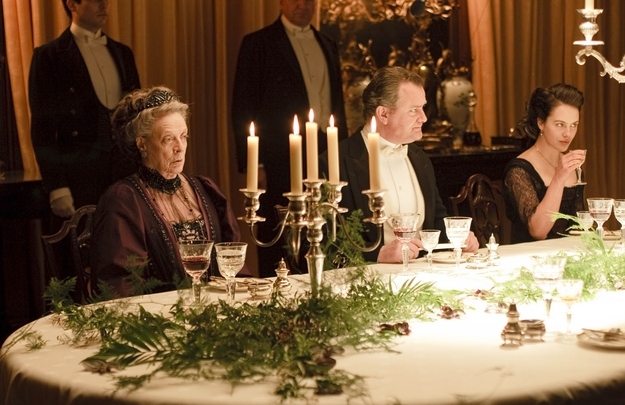
Rich people got epic when it came to dinner. On the night the Titanic went down, first class passengers were served (among other things!) oysters, filet mignon, poached salmon, foie gras, roasted pigeon, and lamb. Happily, when it came to dinner parties, six courses had become acceptable (instead of the 9 or 10 diners used to be served). The people doing the eating didn’t really care, though, because they weren’t doing the cooking or the cleaning or much of anything other than the eating.
9. Serving canned foods at your dinner party was totally no problem.
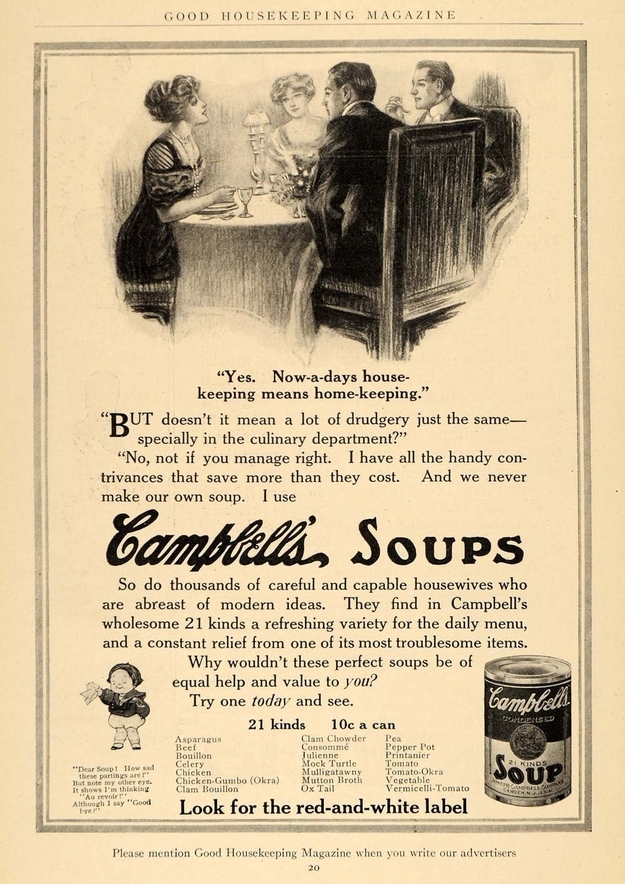
Having canned peas or pineapple for one your zillion courses was perfectly respectable. In fact, canned goods were considered fashionably technologically advanced.
10. People were definitely into booze.
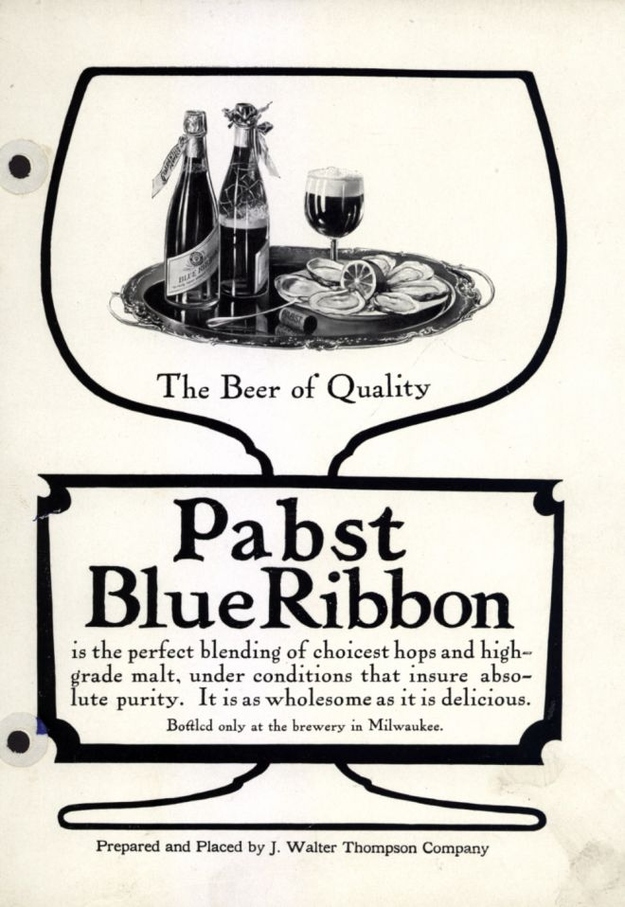
If you were poor, you drank beer or whiskey. If you were a rich and a woman, you maybe drank cocktails (but only if you were progressive). If you were conservative you just drank champagne and wine. From France, obviously.
As for rich men, they drank whatever they wanted. Also, as long as you were rich it was fine to drink all the time, as long as you never seemed drunk.
11. Except if they were into temperance.
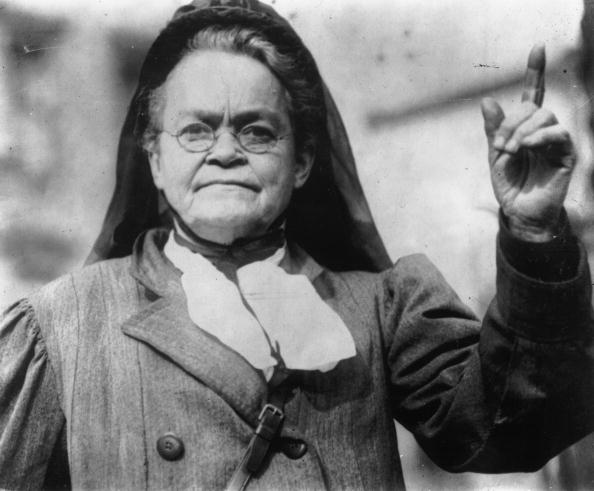
By this point the Woman’s Christian Temperance Union had well over 250,000 members and there was even a group called the Anti-Saloon League, which probably did not have very fun meetings.
This was around when Prohibition supporters did entertainingly deluded things like sponsor the building of water fountains in cities, the idea being that this would lure potential saloon-goers into bouts of water-drinking so satisfying they’d forget about their desire for an alcoholic drink altogether. Of note: people who weren’t into temperance were called “the wets.”
12. Today’s food truck craze had nothing on the food cart vendors of 1912.
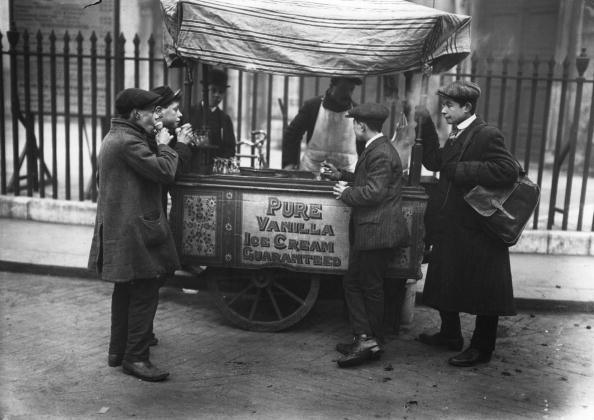
There were so many on the Lower East Side of Manhattan that it could be hard to move through the street. Around then a lot of tenements didn’t even have kitchens, forcing tenants to eat all their meals elsewhere.
Hamburgers were a common street food. In diners you could order what was called hamburger steak—a bunch of ground meat with gravy—but out on the street this wasn’t really an option, so vendors came up with the ingenious solution of sticking the meat into a bun.
13. If you were poor and weren’t near a food truck, you likely ate lunch at a saloon.
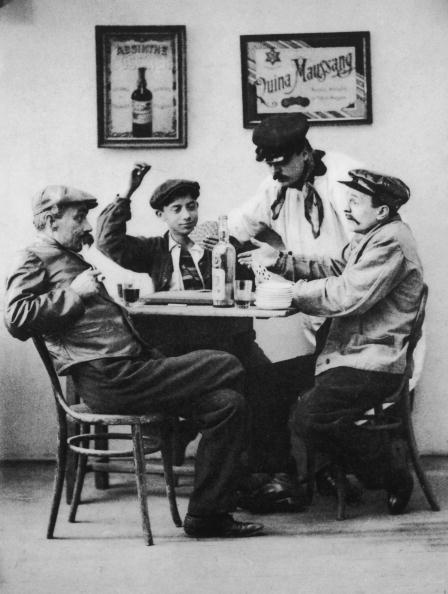
Saloons would often give away lunch for free, with the only stipulation that customers had to buy some alcohol. This only worked if you were a guy, though. If you were a woman and went into a saloon everyone would assume you were a prostitute.
14. Single women’s dining options were seriously limited.

Women generally couldn’t go into restaurants unaccompanied, and some restaurants even had separate rooms for women. If a woman lived in a boarding house she would often be served her meals there. As far as going out without a male companion, her options basically just included cafeterias, tea rooms or the new-fangled Automat.
15. Automats were cutting edge.
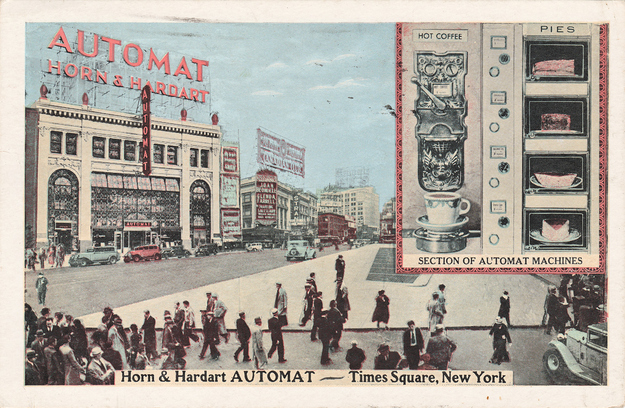
The first Horn & Hardart Automat in New York City (the chain started in Philadelphia in 1902) opened in Times Square in 1912, complete with a two-story stained glass facade created by Nicola D’Ascenzo, who had done the windows at St. John the Divine. There were no waiters—instead the food appeared behind glass windows and when you put money into a slot, the window opened and you could take out your items. At first customers were always tapping on the glass, assuming they needed to get a waiter’s attention, but eventually they got the hang of it. By 1933 there were 43 Automats in New York City.


